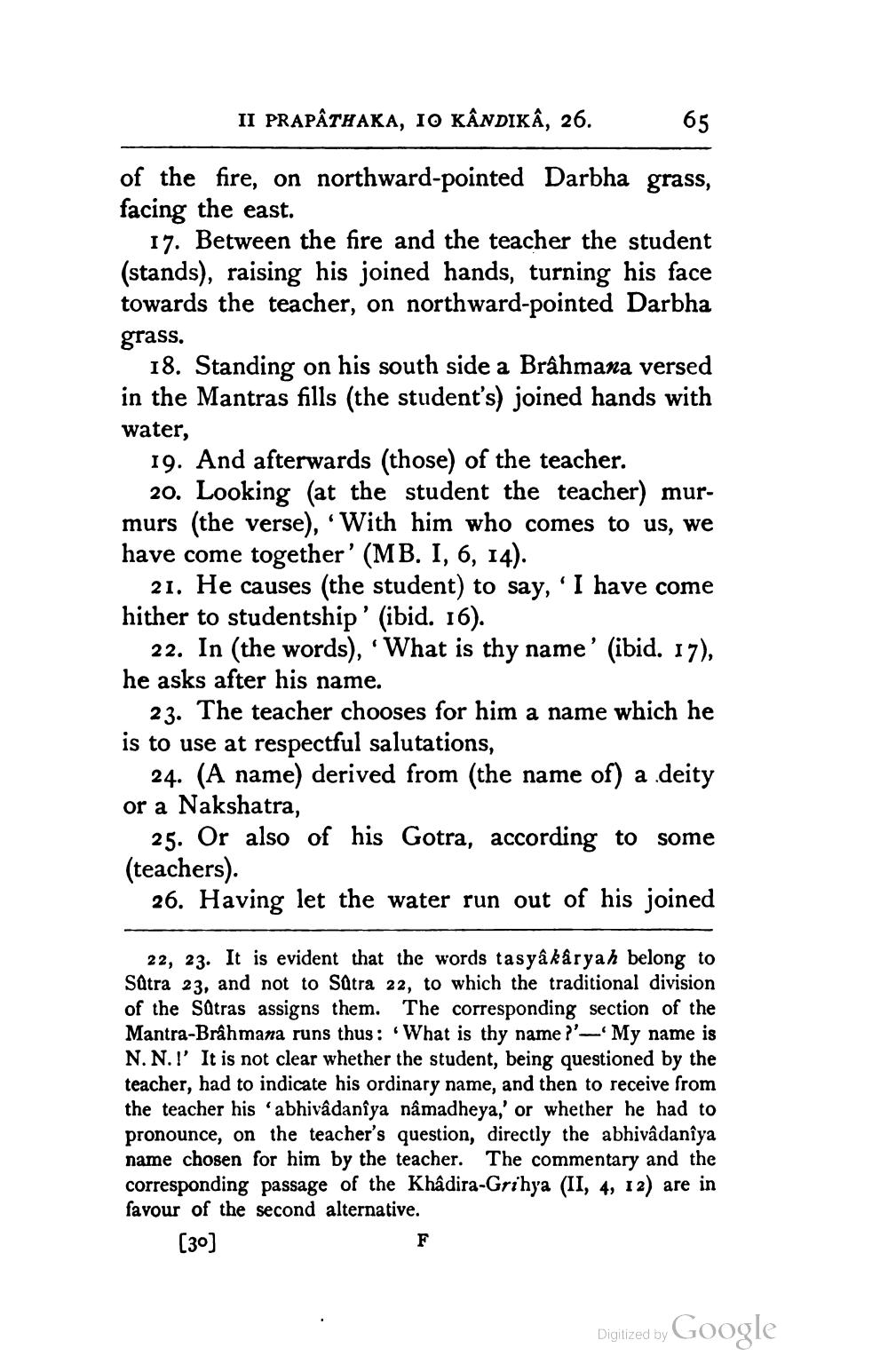________________
II PRAPATHAKA, 10 KÂNDIKÂ, 26.
65
of the fire, on northward-pointed Darbha grass, facing the east.
17. Between the fire and the teacher the student (stands), raising his joined hands, turning his face towards the teacher, on northward-pointed Darbha grass.
18. Standing on his south side a Brahmana versed in the Mantras fills (the student's) joined hands with water,
19. And afterwards (those) of the teacher.
20. Looking (at the student the teacher) murmurs (the verse), “With him who comes to us, we have come together' (MB. I, 6, 14).
21. He causes (the student) to say, 'I have come hither to studentship’ (ibid. 16).
22. In (the words), 'What is thy name' (ibid. 17), he asks after his name.
23. The teacher chooses for him a name which he is to use at respectful salutations,
24. (A name) derived from (the name of) a deity or a Nakshatra,
25. Or also of his Gotra, according to some (teachers).
26. Having let the water run out of his joined
22, 23. It is evident that the words tasya karyah belong to Sūtra 23, and not to Satra 22, to which the traditional division of the Satras assigns them. The corresponding section of the Mantra-Brâhmana runs thus: What is thy name?'-_My name is N.N.!' It is not clear whether the student, being questioned by the teacher, had to indicate his ordinary name, and then to receive from the teacher his abhivadanîya namadheya,' or whether he had to pronounce, on the teacher's question, directly the abhivadanîya name chosen for him by the teacher. The commentary and the corresponding passage of the Khâdira-Grihya (II, 4, 12) are in favour of the second alternative.
[30]
Digitized by Google




